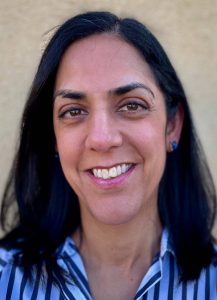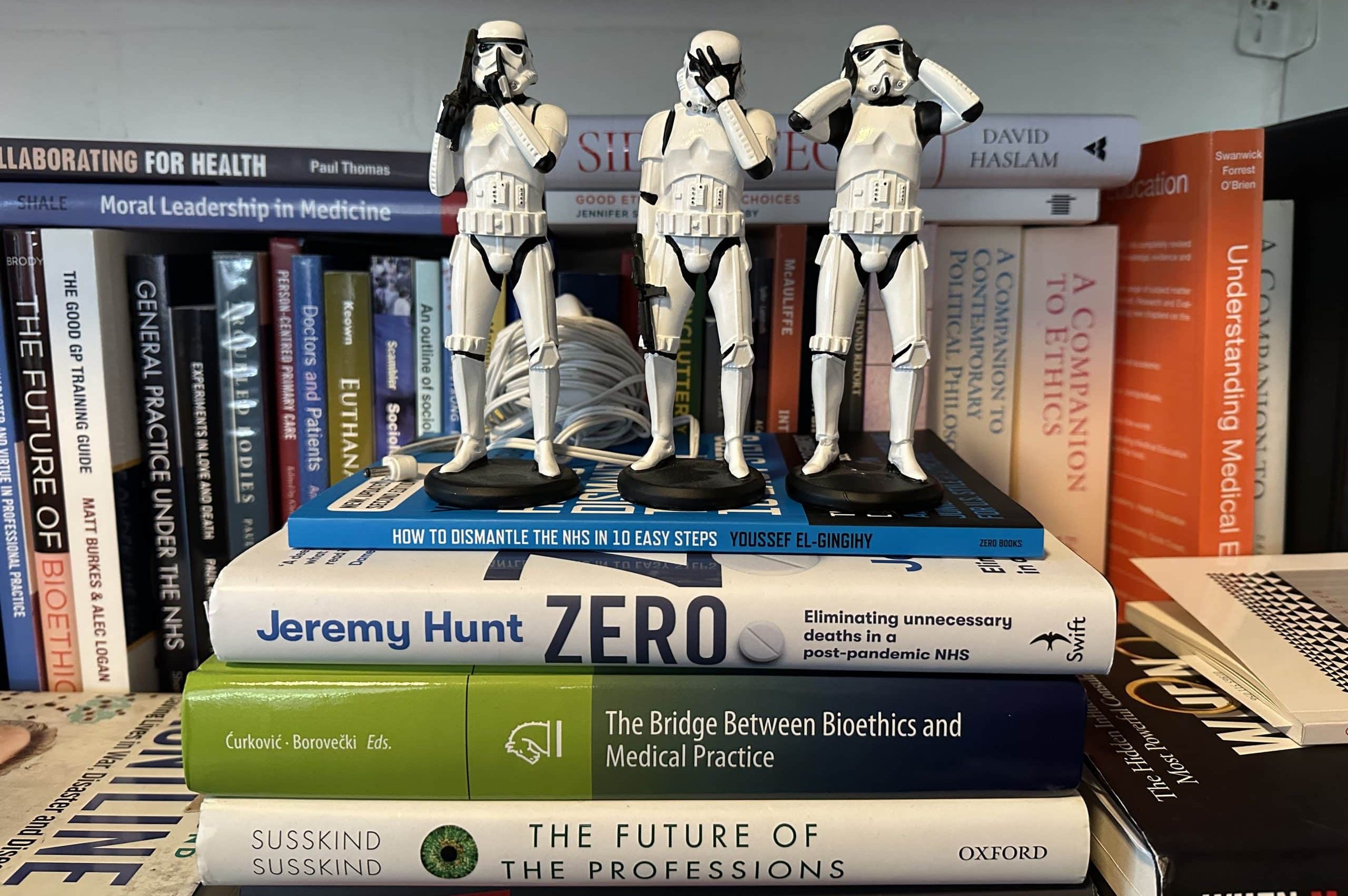 Nada Khan is an Exeter-based NIHR Academic Clinical Fellow in general practice and GPST4/registrar, and an Associate Editor at the BJGP. She is on Twitter: @nadafkhan
Nada Khan is an Exeter-based NIHR Academic Clinical Fellow in general practice and GPST4/registrar, and an Associate Editor at the BJGP. She is on Twitter: @nadafkhan
Where are the GPs going to come from? With every grim pronouncement on the dwindling number of doctors in the NHS it seems that we need to recruit an army of GPs to sustain the primary care workforce. The future looks glum; in even the best-case projected scenario, the expected primary care shortfall by 2030/31 is 1,200 full-time equivalent GPs. The pessimists amongst you may want to know about the worst-case scenario which dishearteningly suggests a GP shortfall of 18,900 FTE GPs by 2030/31.1 Charlie Massey, Chief Executive of the GMC, tells us ‘there is no ready-made batch of GPs waiting to be plucked off the shelf to ease the pressures on the workforce’, and again, recommends changes to the GP performers list to allow the increasing numbers of specialty and association specialist (SAS) and locally employed (LE) doctors to work in general practice.2 Mr Massey is clearly looking at the increasing numbers of SAS doctors (the fastest growing proportion of the medical workforce) and the dwindling GP workforce and is trying to do some fancy maths to offset the shortfall. In the bookcase of doctors coming to the rescue of general practice, what are the different shelves, and how can they contribute to ease pressures on the workforce?
The bottom shelf – GP trainees, returners, and international GPs
The pessimists amongst you may want to know about the worst-case scenario which dishearteningly suggests a GP shortfall of 18,900 FTE GPs by 2030/31.
The first, and most traditional route of creating a GP is by training them through the GP specialty training. The numbers of doctors accepted onto the GP training scheme has increased steadily since 2014, with a recruitment total almost doubling from 2671 to 4032 trainees in 2022.3 This shelf of incoming GPs is weighed down by the significant time and cost investment in their training, and the numbers of trainees would need to increase significantly to meet projected shortfalls.
Various attempts are being made to bring GPs back into practice through return to work and international recruitment programmes. The Return to Practice and International Induction schemes offer a supported pathway for GPs to return to practice after a career break or those trained internationally to practice in the UK. I struggled to find numbers of GPs completing these schemes and then entering practice, though Health Education England should have this information available (should anyone want to complete a Freedom of Information request). This shelf, perhaps, fits the brief of having ‘ready made’ GPs, but whether there are enough to be plucked off and set forth into practices is unclear and probably unlikely.
The middle shelf – SAS doctors
SAS doctors are a diverse group of doctors with varied skills and experience who currently work solely in the acute sector. There are several issues to understand when thinking about deploying them into primary care. First, it’s important to acknowledge that this is a diverse group of doctors with wide ranging skills and experience. A report led by the GMC aiming to characterise this cohort identified three distinct groups of SAS and LE doctors. First were the ‘periodic SAS and LEs’ comprising mostly young UK graduates at the early stages of their career, and who perhaps have started a training programme and then decided to take a break to explore other options. Second were the ‘career SAS and LE doctors’, who were mostly older (typically aged between 30-50), mostly trained overseas, and who plan to remain as SAS doctors with no intention to enter a speciality training programme. And the third group are the ‘recent SAS and LEs’ comprising young overseas doctors who have yet to decide if they will enter a training programme or move into the career SAS doctors group.4 What struck me from this report is that this is a fairly mobile group of doctors who may abandon the SAS ‘shelf’ altogether to enter a training programme or return to one after a career break, or move away from practising in the UK. This might have implications for workforce planning based on using SAS doctors in general practice. If periodic and recent SAS and LEs, who comprise the largest numbers of SAS doctors, are likely to move into training in a different specialty or stop being an SAS doctor, is this a group that will stay working in general practice in the long-term?
The second issue is trying to understand how SAS doctors would work in practice. There is a precedent in bringing a skilled workforce into general practice through the Additional Roles Reimbursement Scheme (ARRS) which aims to increase workforce capacity by bringing acute care staff into general practice. It does seem daft that the ARRS scheme allows primary care networks to recruit these experienced clinicians, including advanced nurse practitioners and paramedics, to work in general practice whilst other doctors not trained or training in general practice are unable to do the same. But taking the ARRS scheme as an example, the efficiency of the scheme in providing more appointments and the impact on workload is unclear. Appointments are often longer, and clinicians moving into general practice need supervision. SAS doctors need individualised support and training to meet their specific needs and skills to work in general practice, and full-time equivalent GP time can counterintuitively fall with these schemes, as GP time is spent increasingly in supervision and training responsibilities rather than direct patient care.1
Thirdly, Mr Massey says that SAS doctors are ‘itching’ to do more with their skills, but let’s not assume that SAS doctors will all want to work in general practice. It’s probably worth asking the SAS doctors whether they actually want to take on these roles before assuming they are coming to the rescue.
What next for putting SAS doctors into practice?
…there is a shelf we haven’t mentioned, and that’s the shelf with the entire GP workforce already stuffed on it.
As Chief Executive of the GMC, Charlie Massey is well placed to lobby the government for reform to the Performers List rules to allow SAS doctors to work in general practice. In a game of stakeholder Top Trumps though, surely the Royal College of GPs should have the final say on whether they will support this move. Kamila Hawthorne spelled out the College’s concerns with the GMC proposals, citing a need for clarity around funding, how piloting is being rolled out, supervision and how the use of SAS doctors would impact on patient safety. In a letter to NHS England she writes that ‘the College is currently not in a position to support the introduction of this role or any pilots due to the fact that many of our concerns remain unresolved. We urgently require further information and engagement from NHS England to determine our future position.’5 The RCGP has drawn two ‘red lines’ for use of SAS doctors, firstly, that they must be supervised by a GP and given a ‘thorough induction’ to general practice. Secondly, that SAS doctors are not substitutes for GPs, and cannot be seen as an alternative to filling the shortage of GPs as promised in the Conversative manifesto.5 Under these terms, SAS and LE doctors are looking less like a ‘ready made’ batch of GPs but an alternative workforce who will require substantial input from experienced GPs.
The shelf of the vanishing GP
Whist there is no shelf with spare GPs sitting on it, there is a shelf we haven’t mentioned, and that’s the shelf with the entire GP workforce already stuffed on it. In some way, this shelf fits the brief of the ‘ready made batch of GPs’, perhaps not waiting to be plucked off into service, but maybe looking for reasons to stay working in the NHS. The problem is that some of these GPs don’t want to work in the UK primary care model as it stands, but if GPs don’t want to work in this climate, why would a group of SAS doctors feel differently? No matter who comes ‘to the rescue’, it’s worth shifting the focus to looking closer at what’s wrong with the system itself and why GPs are leaving.
Back to those workforce projections, the Health Foundation summarised their position on the GP workforce crisis by emphasising that ‘sustained policy action targeting improved retention will be the key to mitigating the GP shortfall.’1 while acknowledging that this will need comprehensive long-term policies and planning. This sounds like a big ask, and it is. Whether SAS doctors are able or willing to sustainably rescue primary care from demise is unclear, but to maximise the capacity of the ready-made GPs already working and contributing to the NHS, we need to make retention the cornerstone of maximising workforce capacity.
References
1. Shembavnekar NB, J.; Bazeer, N.; Kelly, E.; Beech, J.; Charlesworth, A.; McConkey, R.; Fisher, R. Projections: General practice workforce in England: The Health Foundation; 2022 [Available from: https://www.health.org.uk/publications/reports/projections-general-practice-workforce-in-england.
2. In full: Charlie Massey’s speech on SAS doctors: Pulse 2023 [Available from: https://www.pulsetoday.co.uk/special/workforce/in-full-charlie-masseys-speech-on-sas-doctors/.
3. Record number of 4000 GPs accepted on training placements: Health Education England 2021 [Available from: https://www.hee.nhs.uk/news-blogs-events/news/record-number-4000-gps-accepted-training-placements.
4. What do we know about Specialty and Associate Specialists and Locally Employed Doctors? 2019 [Available from: https://www.ouh.nhs.uk/education-centres/training/documents/sas-and-led.pdf.
5. Hawthorne K. Letter on SAS doctors 2023 [Available from: https://www.rcgp.org.uk/getmedia/44b48f9e-6382-438e-a56f-a64958376127/nhse-letter-sas-doctors-130423.pdf.
Featured image: The future of general practice? by Andrew Papanikitas, 2023







[…] https://bjgplife.com/is-there-a-shelf-with-spare-gps-coming-to-the-rescue/ and https://bjgplife.com/amidst-a-gp-workforce-crisis-where-did-all-the-jobs-go/ [accessed […]